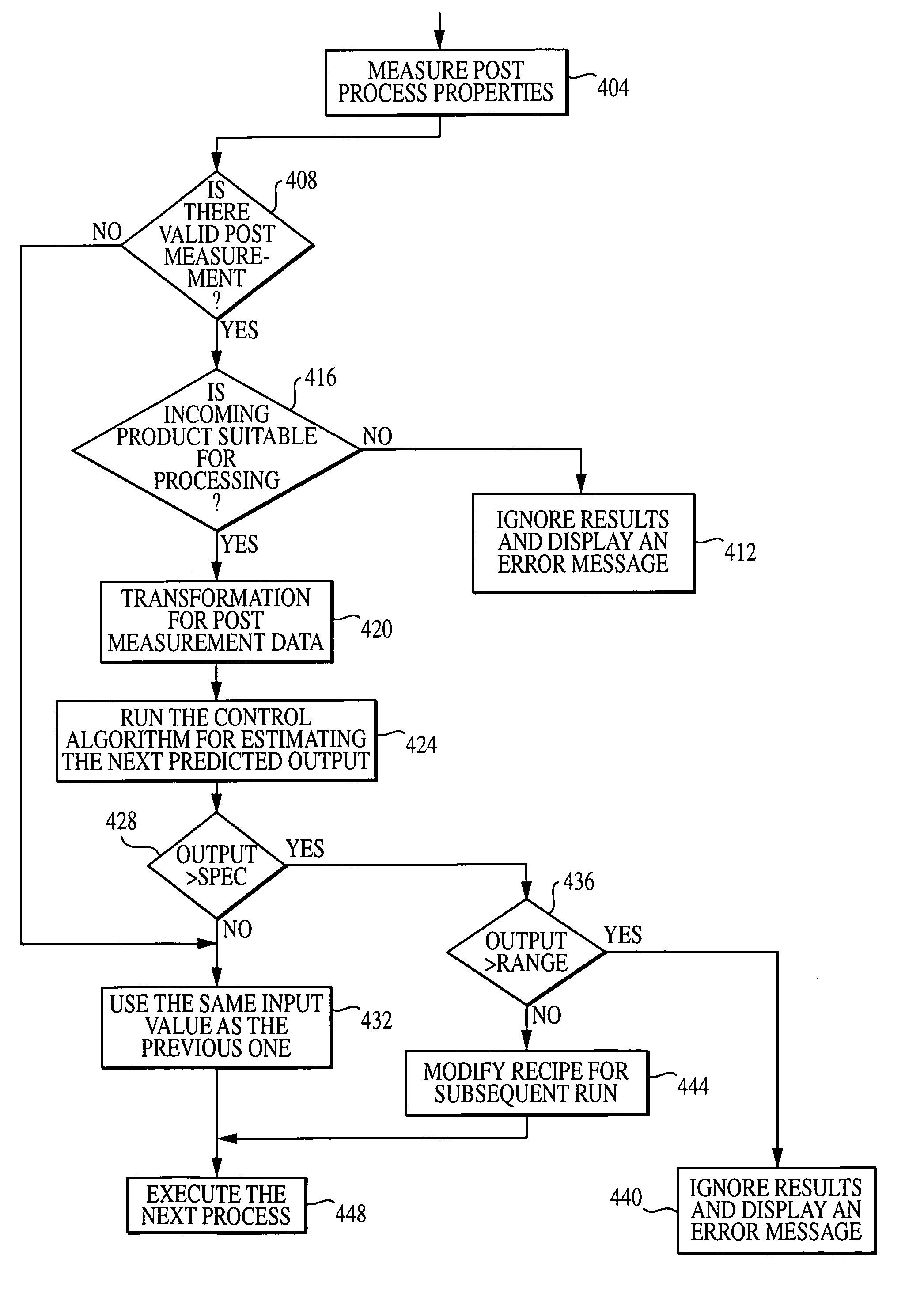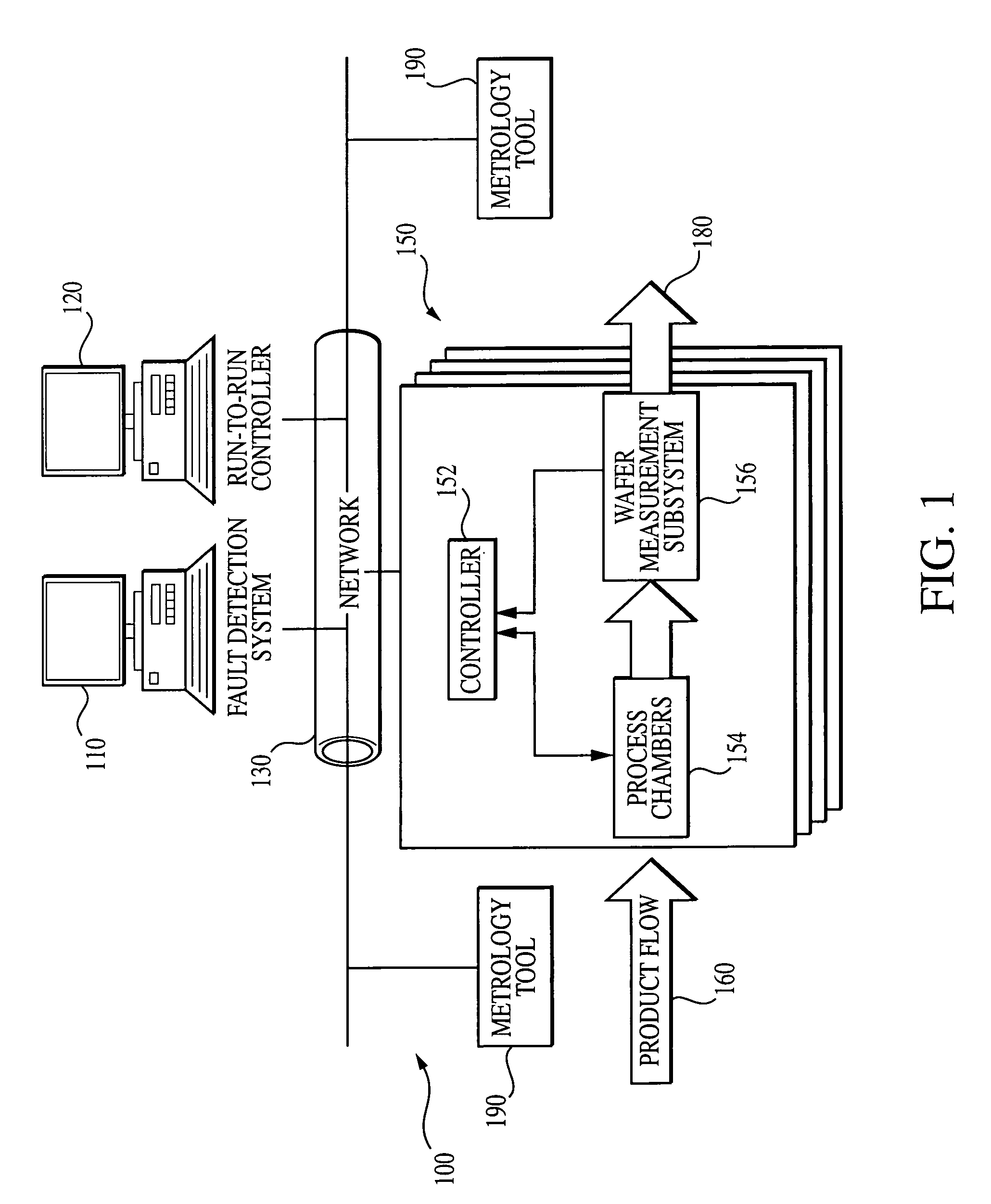Integration of fault detection with run-to-run control
- Summary
- Abstract
- Description
- Claims
- Application Information
AI Technical Summary
Benefits of technology
Problems solved by technology
Method used
Image
Examples
Embodiment Construction
[0024]In accordance with one or more embodiments of the present invention, a technique is provided for processing semiconductor wafers in conjunction with a manufacturing execution system using a run-to-run controller and a fault detection system. More particularly, the manufacturing execution system transfers a recipe to the run-to-run controller for controlling a tool. This recipe includes a setpoint for obtaining one or more target wafer properties. In addition, the fault detection system monitors processing of the wafers by measuring processing attributes including fault conditions and wafer properties. The run-to-run controller modifies the setpoints of the recipe according to the processing attributes (received from the fault detection system as well as e.g., other information gathering sources) to maintain the target wafer properties, except in cases when a fault condition is detected by the fault detection system.
[0025]FIG. 1 depicts at least one example of a hardware block ...
PUM
 Login to View More
Login to View More Abstract
Description
Claims
Application Information
 Login to View More
Login to View More - R&D
- Intellectual Property
- Life Sciences
- Materials
- Tech Scout
- Unparalleled Data Quality
- Higher Quality Content
- 60% Fewer Hallucinations
Browse by: Latest US Patents, China's latest patents, Technical Efficacy Thesaurus, Application Domain, Technology Topic, Popular Technical Reports.
© 2025 PatSnap. All rights reserved.Legal|Privacy policy|Modern Slavery Act Transparency Statement|Sitemap|About US| Contact US: help@patsnap.com



